 Sideway
BICK BLOG from Sideway
Sideway
BICK BLOG from Sideway
|
Link:http://output.to/sideway/default.asp?qno=140200014 Mechanics Equations of 1D Kinematics General Equations of KinematicsFrom the instantaneous situation, similar equations of 1D kinematics can be used to calculate the unknown quantity from the known quantities for 1D motion. Equations of 1D KinematicsAcceleration as a function of time tThe motion of an object is described with respect to time. From the Instantaneous Situations, general equations of 1D kinematics are derived to calculate unknown quantity for the motion of an object as following. 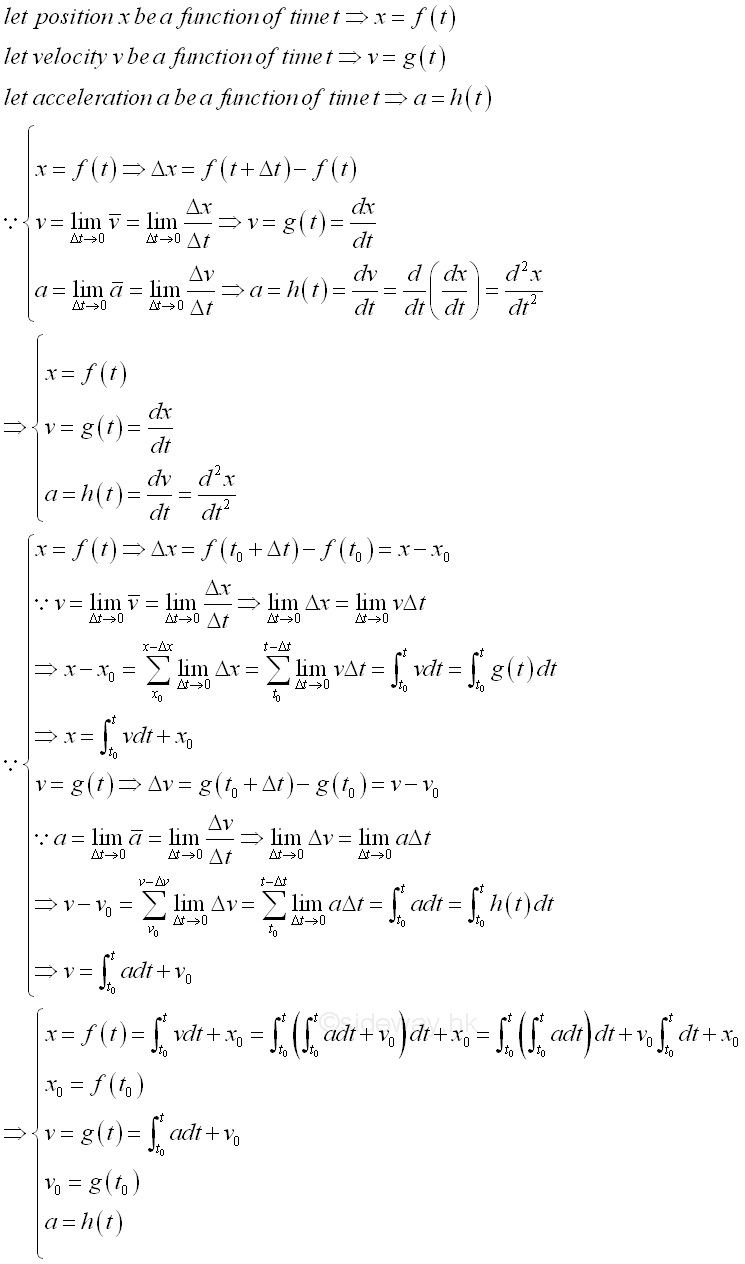
For uniform motion where a=0, imply. 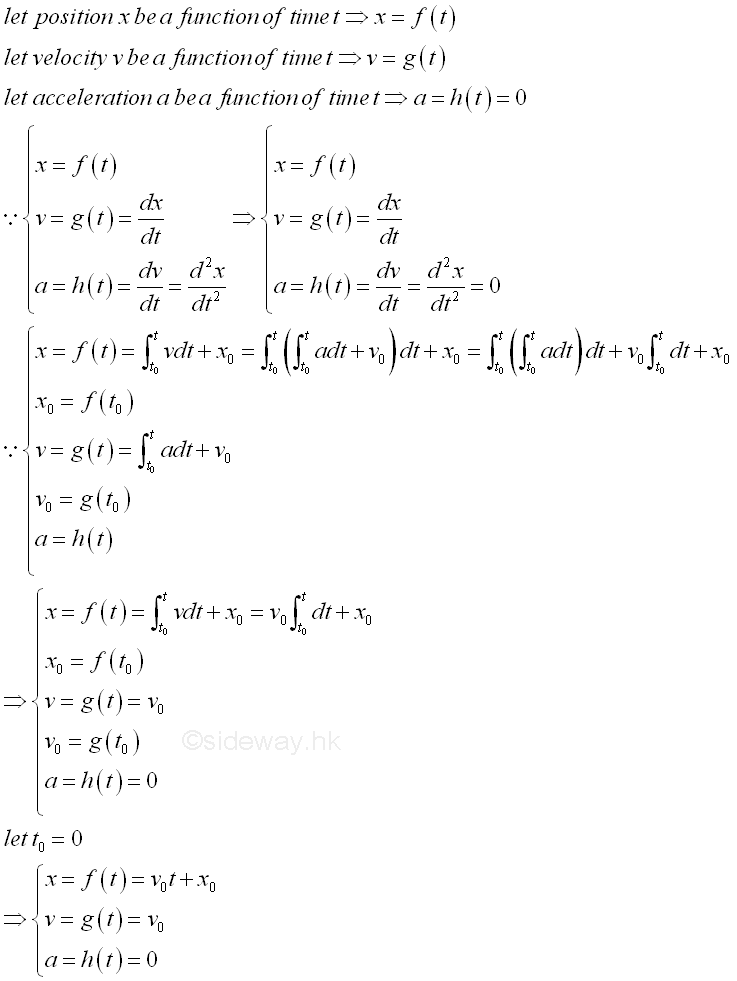
For uniformly accelerated motion where a=constant, imply. 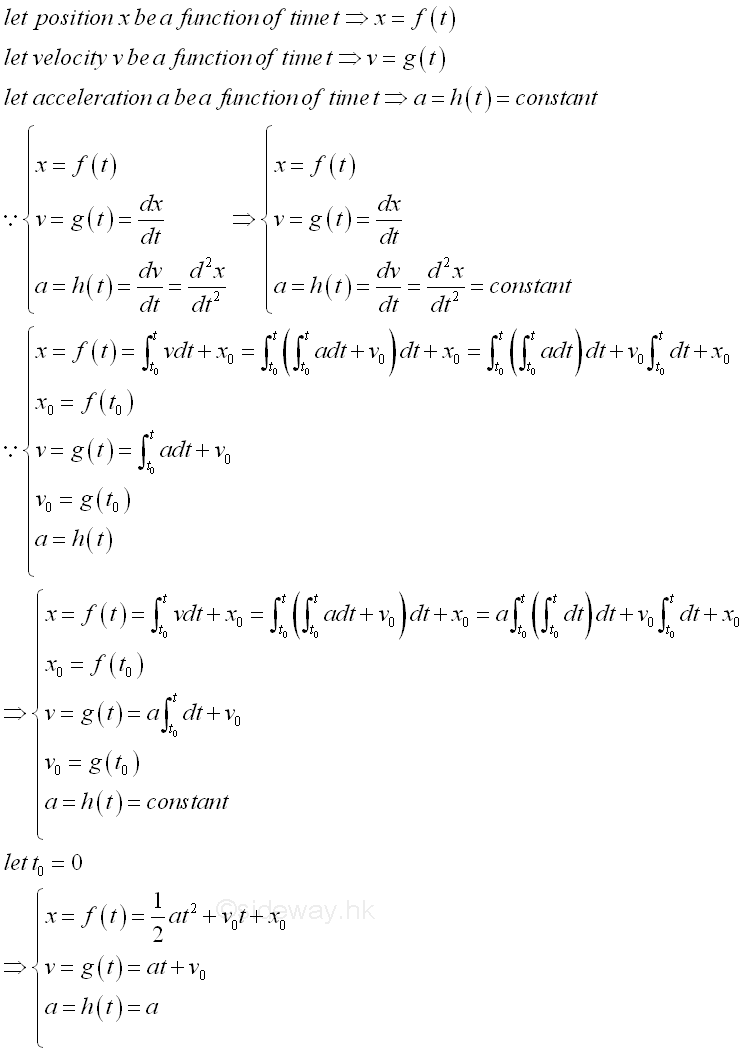
Acceleration as a function of positionWhen position is a function of time, the motion of an object can also be described with respect to position, if time t can also be expressed as a continuous function of position x. From the instantaneous situations, both the instantaneous velocity and instantaneous acceleration with respect to the time t are also related to same position x as position x is a function of time t. 
For uniform motion where a=0, imply. 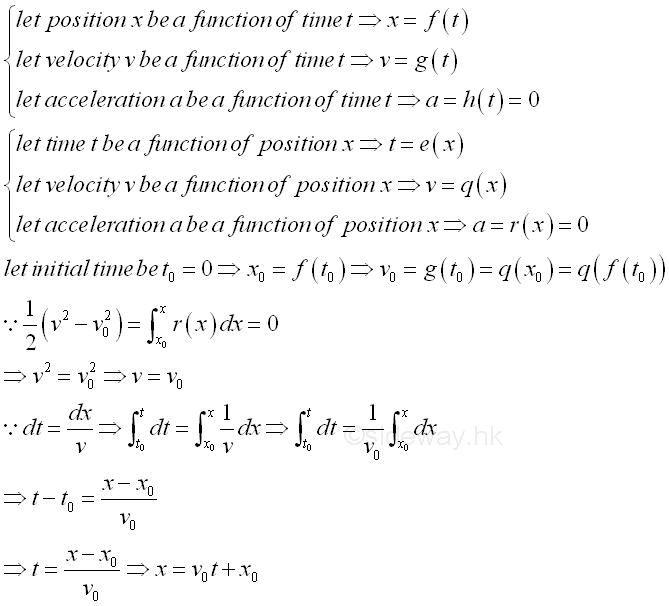
For uniformly accelerated motion where a=constant, imply. 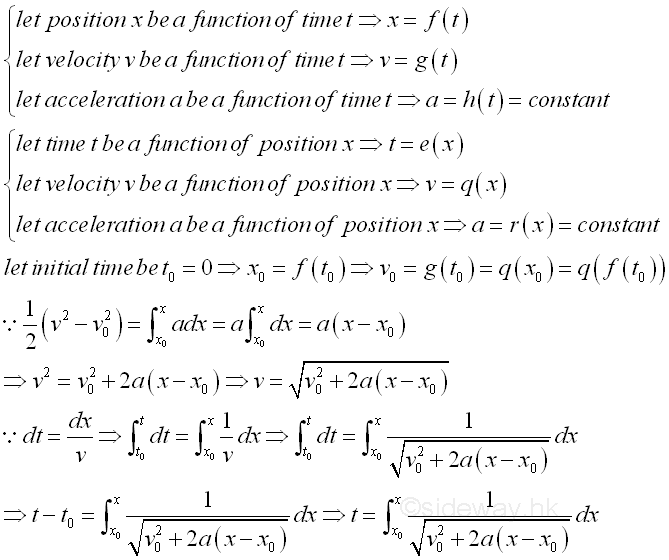
Acceleration as a function of velocityWhen velocity is a function of time, the motion of an object can also be described with respect to velocity, if time t can also be expressed as a continuous function of velocity v. From the instantaneous situations, both the position and instantaneous acceleration with respect to the time t are also related to same velocity v as velocity x is a function of time t. 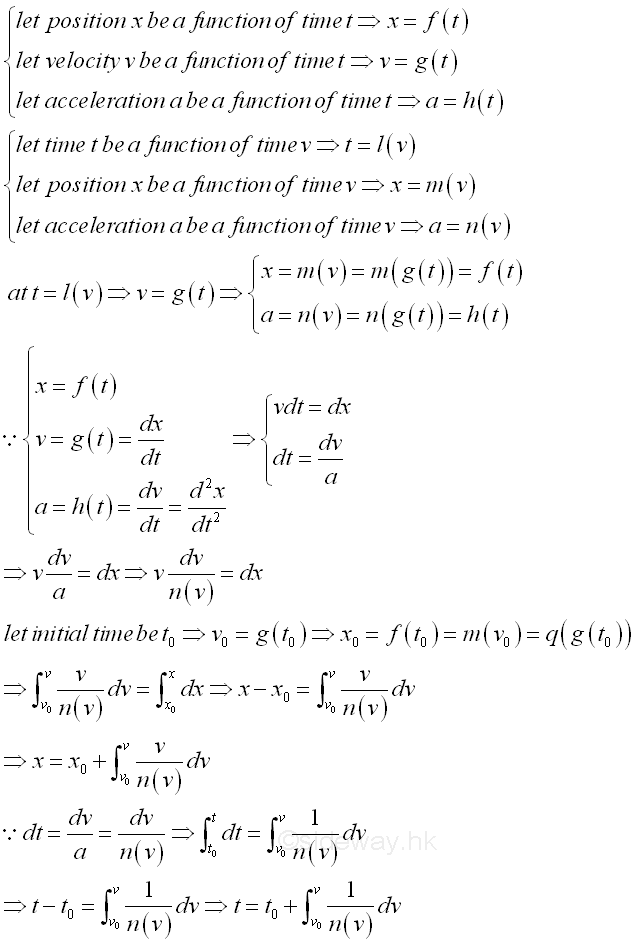
For uniform motion where a=0, imply. 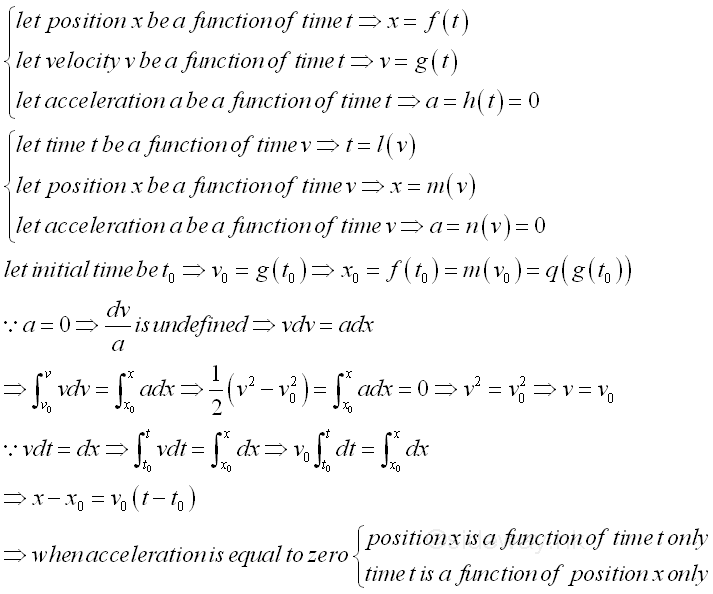
For uniformly accelerated motion where a=constant, imply. 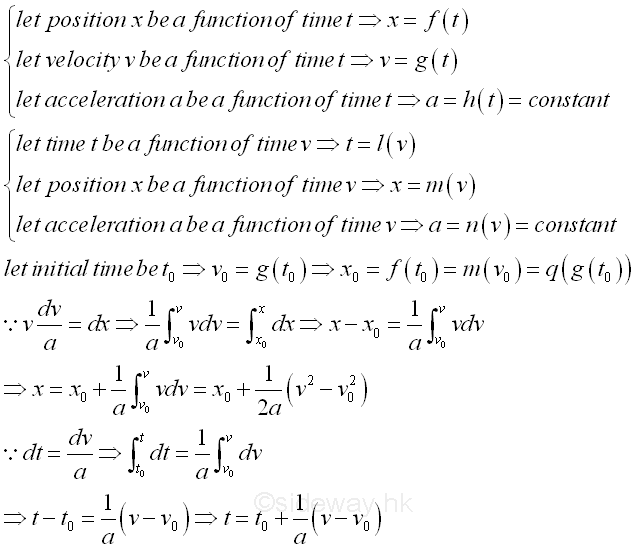
General Equations of 1D KinematicsGeneral equations of 1D kinematics are. 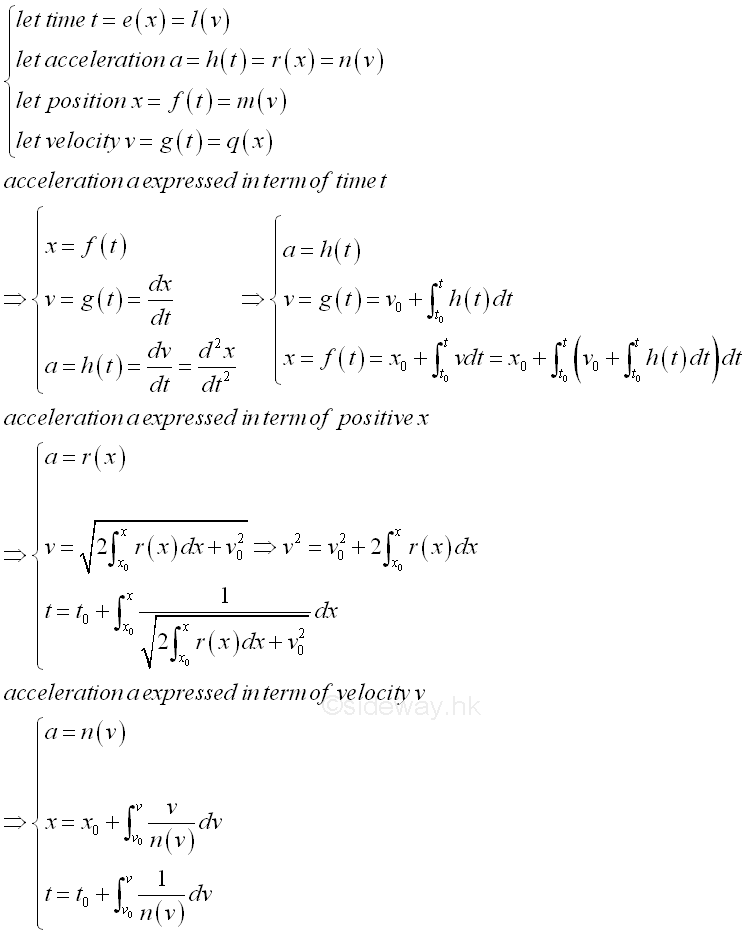
|
Sideway BICK Blog 14/02 |
||||||||||||||||||||||||||||||||||||||||||||||||||||||||||||||||||||||||||||||||||||||||||||||||||||||||||||||||||||||||||||||

